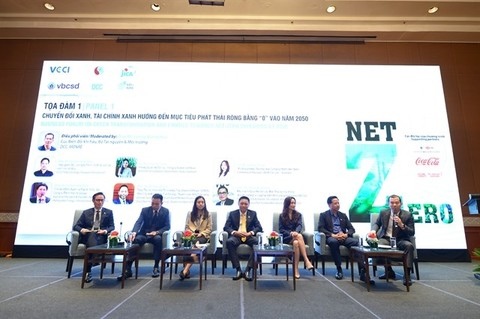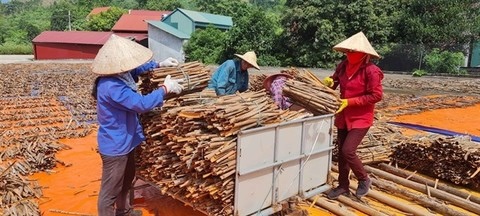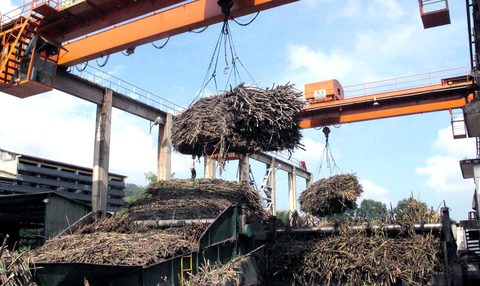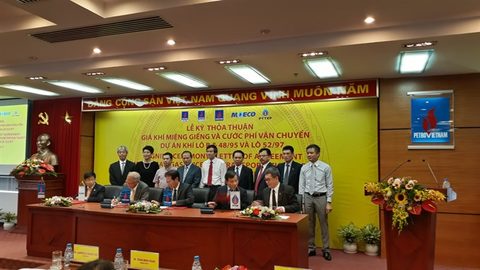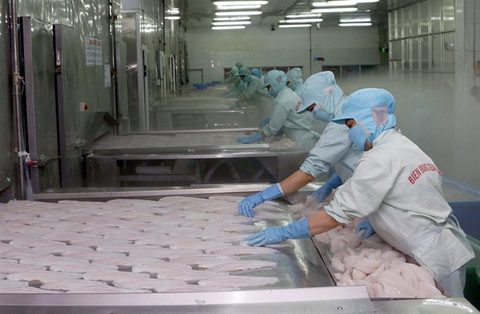Smarter energy is on the way, pending some local challenges
Smarter energy is on the way, pending some local challenges
Vietnam is making consistent efforts to build a smart energy industry, where investors can easily find good investment opportunities.
Koos Neefjes, senior climate change expert at the United Nations Development Programme in Vietnam, shares his views on how Vietnam can achieve this goal, and the key challenges and opportunities along the way.
A smart energy industry is a forward-looking industry, and one that creates future opportunities for investors as well as consumers.
It is an industry that uses information technology, is at the core of the Internet of Things and is part of the Fourth Industrial Revolution. Its innovations come in, for example, artificial intelligence and material science. It is also a future where most of our energy will be green and clean: public and private transport will become electric; vehicle batteries will become part of the storage capacity in the electricity grid; efficiencies will go up through decentralised power production by citizens and private and public enterprises; the demand and supply of power will be under “smart” management; and there will be new companies and jobs.
So, is Vietnam on the way to becoming a smart energy industry? And does this offer opportunities for investors? My answer to these questions is “yes” and “yes”, but only partly, and more must be done.
First, many existing strategies and plans contain elements of a future smart energy industry, but I think it is not yet enough for an “energy transformation” akin to what is taking place in other countries. Vietnam needs to formulate an energy strategy with a radically different vision: an energy future that is green, clean, mostly electricity-based, interconnected, intelligent, and that benefits all. This means that electricity production must become much more decentralised, diverse, and renewable; future transport must become electricity-based; industry must become significantly cleaner; and housing and construction must become much more energy efficient, even self-sufficient.
Second, Vietnam is planning for growth in renewable energy, but only at a modest pace. According to current plans, most electricity will be generated by burning coal in 2030 and even in 2050. This is the direct opposite of most other countries, including developing countries that are decommissioning coal plants, slowing down or stopping their planning and construction. If countries like Vietnam keep coal as a significant factor in the energy mix, the fight against global climate change will be very difficult.
I think that Vietnam must rethink its power development plans urgently, because the alternatives are cheaper and cleaner, and they will improve national energy security. There are dozens of countries where solar photovoltaics (PV) and wind power are already cheaper than coal power. This can also be achieved in Vietnam because there is plenty of sun and wind, especially in the central and southern areas of the country.
Some coal power plants are highly efficient and produce less pollution than existing plants, but they are much more expensive per unit of electricity over their economic lifetime, need a continuous supply of (imported) coal, and produce huge amounts of solid waste. Also, the state must limit public debt, so opportunities for private investment in clean power must be created – something that I think is not only possible, but straight-out easy.
Third, there are a lot of policies and regulations in place to encourage energy efficiency and the use of renewable energy, but some of the most important administrative and technical regulations are weak or missing. An example of this is a regulation on “net-metering” – meaning that households, communities, or businesses with solar PV panels on their roofs interconnect their system with the power grid. They consume electricity that they themselves produce, send the excess to the grid, and buy when their demand is higher than their own supply (mostly at night). Regulations must be in place on the technical equipment for the interconnection and the billing system with the local power distribution company. Such regulations exist in many countries, so Vietnam could copy and adapt them to the local situation.
I estimated that even in not-so-sunny Hanoi I would recover my investment in about seven years against the current prices of equipment and power tariffs, whereas the equipment can stay for at least 20 years with minimal maintenance. It would cost the state nothing, and local power companies could be allowed to charge a small fee for the use of infrastructure. The country will increase its renewable power production capacity through private investment, the consumer will benefit, and jobs will be created. A win-win(-win) situation, but Vietnam has yet to issue such regulations.
Fourth, Vietnam is already seeing a surge in the use of electric scooters, and you can sometimes spot an electric tourist vehicle as well. However, there has been no bold, forward-pointing move in Vietnam’s transport policies, car industry, or construction sector. The major car companies in the world are developing electric cars, buses, and also vans and trucks. Many developed countries, China and India, the US state of California, and several cities around the world are issuing policies to phase out the production, sales, and use of diesel cars, and later, of petrol cars. Some are setting targets for the dominance of electric car sales as soon as 2025 or 2030. This will have a huge impact on the power sector and it offers opportunities for Vietnam, if smartly regulated.
Car batteries can be charged when there is excess power production and they can feed back into the grid at times of high demand, for which they must be connected to the power grid as well as the Internet of Things. Creating opportunities for investment as well as consumer benefits from this new concept of transport-energy management requires, for example, new designs of parking spaces and buildings. Your home, farm, factory, or office will become your “petrol” station, and your vehicle a power source.
Fifth, the electricity transmission and distribution infrastructure must be reinforced and made “smart” to enable a transformation to decentralised electricity production, dynamic demand and supply management, and electric transport. I believe that official development assistance (ODA) to the Vietnamese energy sector should focus on increasing the capacity and smart aspects of this infrastructure. It also must create energy storage in the system, for example by pumping water into lakes when too much solar or wind power is generated, which can be used to generate power in times of shortages. With this focus, ODA will enable small and large private investors in renewable power.
Finally, Vietnam is already manufacturing renewable energy equipment. Some Vietnamese private investors produce solar water heaters and solar PV components, and there are several large foreign investments already completed and on the way for the manufacturing of solar PV components and wind towers. These factories produce mainly for export. They have been invested and grew with few government incentives, and with policies to open the domestic market they can grow faster. They will generate many jobs, as global data show that renewable energy is much better for employment than the mining and petroleum sector. But they need qualified workers, so universities and colleges must provide appropriate training.
A key role for the government is to drive education and training towards a smart energy future.





